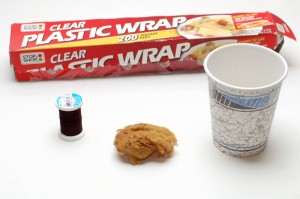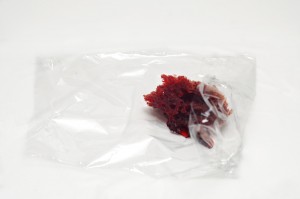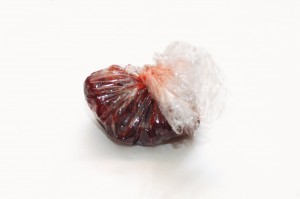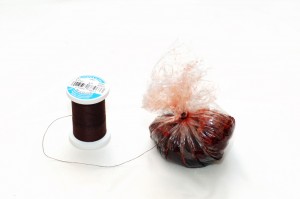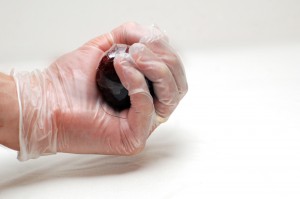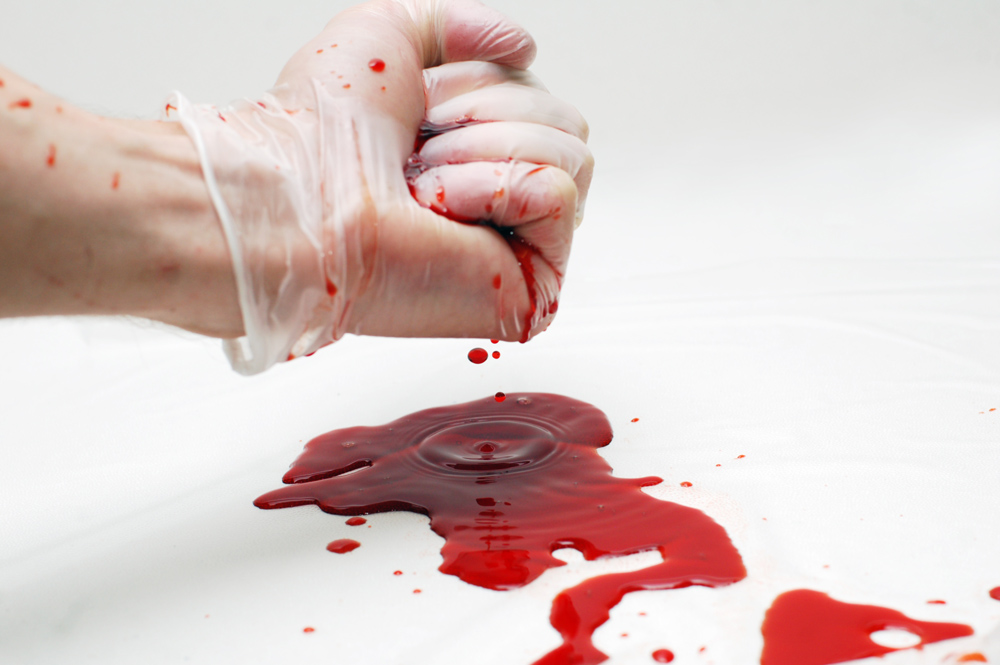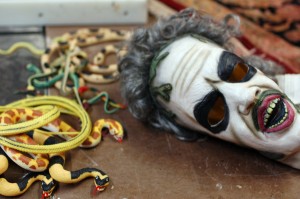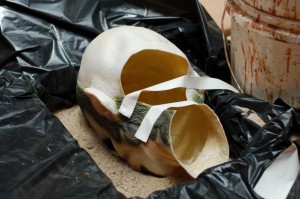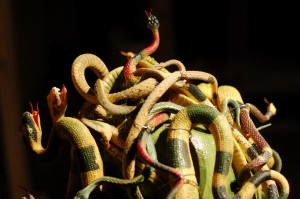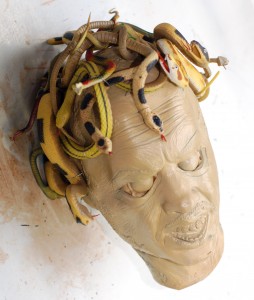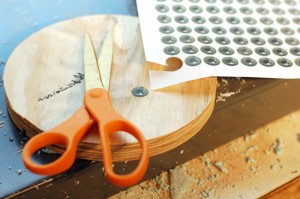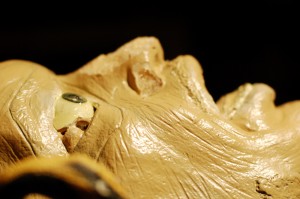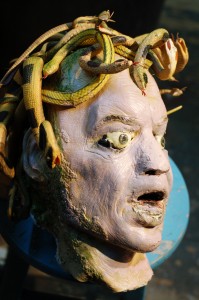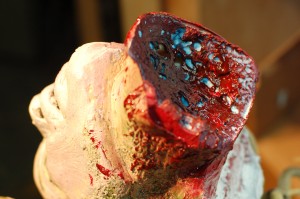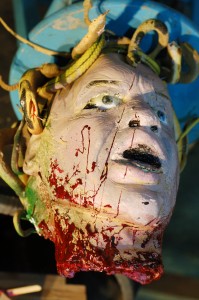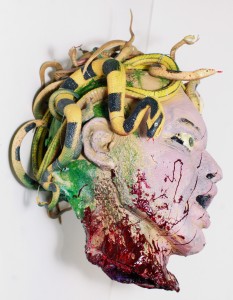The fan of both horror and theatre is sure to have heard of Grand Guignol. Though a producer of a variety of works, the infamous Parisian theatre is best known for its horror plays performed in the years leading up to World War II. Founded in 1894 by Oscar Méténier, Le Théâtre du Grand-Guignol offered up stories such as Le Laboratoire des Hallucinations, by André de Lorde: A doctor performs gruesome brain surgery his wife’s new-found lover. The man is turned into an insane zombie and plunges a chisel into the doctor’s brain. Anyone familiar with EC Comics will recognize the kind of plots this theatre performed.
When a theatre regularly displays amputations, burning in acid, eviscerations, stabbings and all other manner of violent actions, a prop person may ask: how realistic were these effects, and how were they pulled off?
Perhaps one of the best kept secrets of the Grand Guignol was their fake blood. Many sources speak in fascination that it would congeal after a few minutes like real blood. Mel Gordon, a theatre Professor at U.C. Berkeley and Grand Guignol expert, says that the base is made of a heated mixture of equal parts carmine and glycerin (Callboard magazine, April, 1996). Carmine is a bright red pigment made by boiling dried insects; you can find paints which use that pigment, though finding it in its pure form is more difficult and necessitates looking for specialty online stores. You can still buy glycerin at drug stores and online. It is often added to stage blood to give it a bit of sheen under the lights. Further justification for this theory is found in a Time Magazine article entitled “The Theater: Murders in the Rue Chaptal” from March, 1947:
The theater has a secret recipe for blood; when the stuff cools it coagulates and makes scabs. Thrill-hungry customers in the small auditorium get a dividend when they overhear the hoarse backstage whisper: “Vite [tr: quickly], Edmond! Warm up the blood.”
Edmond Beauvais was the chief propman of the theatre in the mid-1940s. The last director of the theatre, Charles Nonon, personally mixed nine different shades of blood daily (Time Magazine, November 30, 1962). We learn more about the possible ingredients of this fake blood from two articles about the tour of Grand Guignol which hit San Francisco in 1950. Director Robert T. Eley called on local druggist Barnes-Hind for a 2 percent solution of “methyd cellulose” (Five Star Final, April 10, 1950) and (Pace, Michael Farriday, March 1951). I’m going to make the assumption that both of these articles are actually talking about “methyl-cellulose”. It thickens in cold water and gels when heat is added. You can buy it in its pure form or find it in popular constipation medications; it was used to make the ectoplasm in Ghostbusters. Blood which did not need to flow could be made from currant jelly (“The Relationship between Le Théâtre du Grand Guignol and the Cinema 1897-1962”, Sean J. O’Leary, 2005).
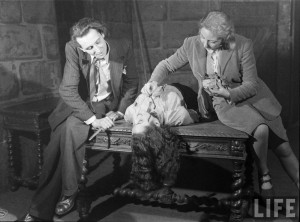
Nonon also made viscera from red rubber hose and sponges soaked in blood. Taxidermists supplied animal eyeballs, which he coated in aspic (a clear jelly made from meat stock) and stuffed with anchovies marinated in blood (Time, 1962). Sheep’s eyes were popular, but any animal would suffice because then the eyeball could bounce when dropped (Callboard, 1996). Edible eyeballs were made by a local confectioner’s shop (Pace, 1951). A tongue that was ripped out was made of rubber (Five Star Final, 1950) and (Pace, 1951). According to The Columbia encyclopedia of modern drama, Paul Ratineau, the stage manager, depended on the daily delivery of fresh animal parts by local butchers.
In order to deliver the goods, a variety of devices and trick props were required. These included rubber knives, concealed bladders, tubes and small, strategically located steam pipes (See Magazine, March, 1950), a dagger squirting “blood” from a vial hidden in an actor’s hand, quick flaming powders, a table with props hidden in upstage drawers (The New York Times Magazine, P.E. Schneider, March 1957). Daggers with retractable blades could also squirt blood from the handles; Mel Gordon explains that “a turkey baster, rubber ball, or an eye dropper could provide a good base for building a blood squirting knife” (Callboard, 1996).
In the photograph below, we see how some trick knives are like the classic “arrow-through-the-head” gag prop, where the two halves are separated by a metal clasp which fits around the actor’s limb.
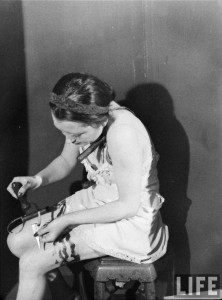
Gordon also explains how the Guignol-eurs chopped off a man’s hand:
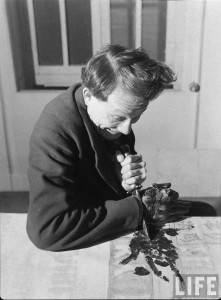
Cutting off a man’s hand is easier than it sounds. Stiffen a glove with glue water so it holds it’s shape and paint it like a real hand. The actor wearing the glove should still be able to move his fingers a bit. When the hand is chopped off the “chopper” removes the glove and the “chopee” moves his hand up into his cuff which is reinforced with a cardboard tube and fitted with a blood pack. The stiffened glove should hold it’s shape perfectly as the unwilling amputee writhes in pain (Callboard, 1996).
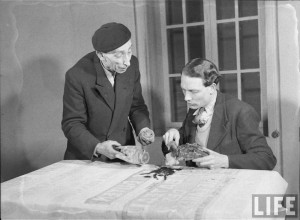
Another eye-popping effect involves hiding a fake eye in the hollowed-out handle of a spoon. Conversely, an actress could wear a plaster or latex quarter mask which holds a fake (sheep’s) eye, lactose powder, and a blood capsule. If she wears her hair over that half of her face (“Veronica Lake” style), the effect would be quite flawless (Callboard, 1996). Mel Gordon describes a more complicated eye-gouging device:
The retractable blade of the knife moves into the handle which squirts blood when pressed against the victim’s face. Affixed to the end of the handle is a piece of adhesive “skin” (latex or lamb skin) with a slit to allow the blade to move through it. As the handle is pressed against the victims eye the sticky “skin” is pressed to the eyelid leaving a gory empty eye socket. When the knife handle is pulled away the blade is released back into position. The actor with the knife squeezes a air pump in the handle and a rubber eyeball on the end of the knife inflates. The eye appears to be impaled on the tip of the knife. Many magic shops sell an inflatable ball and pump mechanism that could work as a base for this prop (Callboard, 1996).
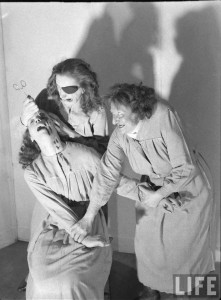
Much of the development of the theatre’s effects are due to the above-mentioned Paul Ratineau. Many of the tricks were secret; some were even patented. Most were devilishly simple though. Their power and Ratineau’s cleverness did not come solely from the tricks though. He overcame a number of challenges. First, the stage itself was only twenty feet by twenty feet large, with the audience close enough to shake hands with the actors (“Theatre du Grand Guignol,” The Drama Review. Frantisek Deak, 1974). Second, the tricks needed to work consistently, in full view of the audience, and while the actors performed in character with other actors in the height of often-crazed emotions.
It should be no surprise then, that Ratineau also developed much of the Grand Guignol’s characteristic lighting. Besides setting the mood, the lighting could hide the imperfections in the prop trickery as well as guide the audience’s eyes to where it was desired. Similarly, the arrangement of the scenery and objects on stage combined with the blocking served to direct or misdirect the audience’s attention (O’Leary, 2005). Sound effects (also pioneered by Ratineau) were critical in bridging the gap between what an audience sees and what they imagine they are witnessing. Finally, dramatic tension and the power of marketing helped sell the bloodshed portrayed on stage by warming the audience up to a heightened level of expectation. The mystery of the special effects themselves added to the legend surrounding the Grand Guignol. In other words, the actual trick props, while clever, might seem crude and unrefined when studied under normal light and out of the context of the performances.
When money became tight, the theatre would prefer to stab women rather than men, because their smaller costumes were cheaper to clean. For head wounds, men were the victims because their short hair was easier to wash (Schneider, 1957). Schneider goes on to recount some of the more serious mishaps and accidents:
Naturally, all this gruesomeness is sheer illusion, but the sham is not always devoid of risk. Once, during an actress’ simulated hanging, the protective device broke and she almost did get hanged. Another recently was burned by the flame of a revolver. In “Orgy in the Lighthouse,†the heroine suffered even more; on one night, she almost caught fire; on another, her male partner began to live his part a bit too much and beat her up in earnest, so that she was forced to go off to the country to nurse a nervous breakdown.
See? Gore and horror aren’t always happy fun times.



